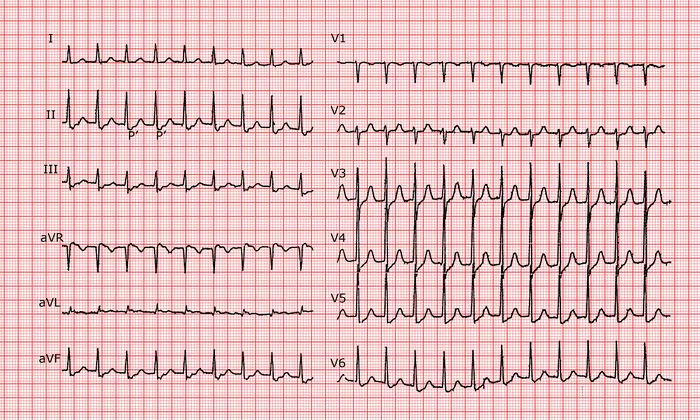Diabetes mellitus, commonly referred to as diabetes, is a chronic metabolic disorder characterized by high blood sugar levels resulting from defects in insulin production, insulin action, or both. Hyperlipidemia, a condition characterized by elevated levels of lipids (fats) in the blood, is a common complication of diabetes. Understanding the intricate relationship between diabetes and hyperlipidemia is essential for effective management and prevention of associated cardiovascular risks.
Introduction to Diabetes And Hyperlipidemia
Diabetes affects millions of people worldwide and is associated with various complications, including cardiovascular diseases. Hyperlipidemia, particularly elevated levels of triglycerides and low-density lipoprotein (LDL) cholesterol, is prevalent among individuals with diabetes. The mechanisms underlying the development of hyperlipidemia in diabetes are multifactorial and involve complex interactions between metabolic, hormonal, and genetic factors.
Insulin Resistance And Dyslipidemia
Insulin resistance, a hallmark feature of type 2 diabetes, plays a central role in the development of dyslipidemia, characterized by abnormal lipid metabolism and lipid profile. Insulin resistance refers to impaired cellular response to insulin, leading to inadequate glucose uptake by tissues and compensatory hyperinsulinemia (elevated insulin levels). Hyperinsulinemia, in turn, contributes to dyslipidemia by promoting hepatic synthesis of triglycerides, inhibiting lipolysis (breakdown of fat), and altering lipid transport mechanisms.
Effects of Hyperglycemia on Lipid Metabolism
Chronic hyperglycemia, a key characteristic of diabetes, exerts detrimental effects on lipid metabolism and contributes to the development of hyperlipidemia. Elevated glucose levels stimulate the production of free fatty acids (FFAs) through increased lipolysis in adipose tissue. Excess FFAs are subsequently transported to the liver, where they undergo esterification to form triglycerides. This process, known as de novo lipogenesis, contributes to elevated triglyceride levels observed in diabetes-associated hyperlipidemia.
Altered Lipoprotein Profile in Diabetes
Diabetes is associated with alterations in the composition and distribution of lipoproteins, which transport lipids in the bloodstream. Individuals with diabetes often exhibit increased levels of triglyceride-rich lipoproteins, such as very-low-density lipoprotein (VLDL) and chylomicrons, as well as decreased levels of high-density lipoprotein (HDL) cholesterol, commonly known as “good” cholesterol. These changes in lipoprotein profile contribute to the atherogenic lipid phenotype observed in diabetes.
Why Does Diabetes Cause hyperlipidemia?
The disease of diabetic patients is related to insulin, and insulin not only controls the level of blood sugar, it is also the main regulatory factor of fat and protein metabolism. Therefore, when the biological regulation of insulin in diabetic patients is disrupted, it is often accompanied by lipid metabolism disorders and the problem of hyperlipidemia. Diabetes combined with hyperlipidemia is often more dangerous. This is because these abnormally elevated lipids are deposited in cells and on blood vessel walls through certain mechanisms, forming atherosclerotic plaques, causing vascular lumen narrowing or even occlusion, causing angina pectoris. , acute myocardial infarction, cerebral infarction and other serious consequences.
Impact of Diabetes Treatments on Lipid Levels
Pharmacological treatments commonly used to manage diabetes, including insulin, oral antidiabetic agents (e.g., metformin, sulfonylureas), and newer glucose-lowering medications (e.g., sodium-glucose cotransporter-2 inhibitors, glucagon-like peptide-1 receptor agonists), may exert varying effects on lipid metabolism and lipid profile. For instance, insulin therapy may exacerbate hyperlipidemia by promoting lipogenesis and inhibiting lipolysis, whereas certain antidiabetic agents, such as metformin, have lipid-lowering effects.
Lifestyle Factors And Hyperlipidemia in Diabetes
Lifestyle factors, including dietary habits, physical activity levels, and body weight, significantly influence lipid metabolism and cardiovascular risk in individuals with diabetes. A diet high in refined carbohydrates, saturated fats, and trans fats can exacerbate dyslipidemia and promote atherogenesis. Conversely, adopting a healthy diet rich in fruits, vegetables, whole grains, and unsaturated fats, along with regular physical activity, can help improve lipid profile and reduce cardiovascular risk.
Conclusion
In conclusion, diabetes is intricately linked to the development of hyperlipidemia, a significant risk factor for cardiovascular diseases. Insulin resistance, chronic hyperglycemia, altered lipoprotein metabolism, inflammatory pathways, and the interplay of genetic and environmental factors contribute to dyslipidemia in diabetes. Effective management of hyperlipidemia in individuals with diabetes requires a comprehensive approach targeting glycemic control, lipid management, blood pressure regulation, and lifestyle modifications. By addressing these interconnected factors, healthcare providers can mitigate the cardiovascular complications associated with diabetes and improve long-term outcomes for patients.
FAQs
Symptoms and Manifestations of High Blood Lipids
High blood lipids, such as elevated levels of cholesterol and triglycerides, often do not cause noticeable symptoms on their own. However, they can lead to various manifestations over time, including:
Xanthomas: Yellowish deposits of fat under the skin, typically around the eyes, elbows, knees, or buttocks.
Xanthelasma: Yellowish patches on the eyelids.
Arcus senilis: A grayish-white ring around the cornea of the eye.
Angina: Chest pain or discomfort due to reduced blood flow to the heart.
Is High Blood Sugar Life-Threatening?
Yes, high blood sugar, especially when sustained at elevated levels over time, can be life-threatening, particularly for individuals with diabetes. Prolonged hyperglycemia (high blood sugar) can lead to various acute and chronic complications, including:
Diabetic ketoacidosis (DKA): A serious condition characterized by high levels of ketones in the blood, which can lead to coma or death if untreated.
Hyperosmolar hyperglycemic state (HHS): A severe condition involving extremely high blood sugar levels, dehydration, and altered mental status, which can be life-threatening if not promptly addressed.
Long-term complications of diabetes, such as :
- cardiovascular diseases
- kidney failure
- neuropathy
- retinopathy
- peripheral vascular disease
Fruits for People with High Blood Sugar
Berries (such as strawberries, blueberries, raspberries): These fruits are low in sugar and rich in antioxidants and fiber.
Citrus fruits (such as oranges, grapefruits): These fruits provide vitamin C and fiber while having a moderate impact on blood sugar levels.
Apples: Apples contain soluble fiber, which can help stabilize blood sugar levels and promote satiety.

